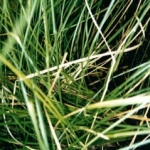| Common Name: |
Palmarosa |
| Botanical Name: |
Cymbopogon martinii |
| Family: |
Graminae |
| Location: |
United States, Africa, Brazil, Comores, India, Indonesia, Pakistan. |
| Extraction: |
Steam distillation |
| Parts Used: |
Leaves |
| Color and Odor: |
The essential oil is clear with a hint of yellow. It has a fresh sweet rosy aroma. |
| Background: |
Known locally in India as "rosha", two varieties are cultivated: motia and sofia. The odor of palmarosa resembles rose and geranium essential oils, and is used as a cheaper substitute for scenting soap as well as flavoring tobacco. Formerly, palmarosa oil was shipped to Bulgaria via Constantinople and used to adulterate rose oil, which was produced there. |
| Properties: |
Tonic, Stimulant, antiseptic, cytophylactic, antirheumatic, antidepressant. |
| Planet: |
|
| Element: |
|
| Direction: |
|
| Magical Influences: |
|
| Uses: |
- Muscular System—Useful for stiff muscles.
- Skin—Promotes sebum production for dry skin; palmarosa is also good for wrinkles. Encourages skin renewal by aiding cellular regeneration. Palmarosa is an antiseptic that is beneficial for skin infections, including acne.
- Emotions—Palmarosa's refreshing and compelling scent calms agitation and clarifies the mind. It lifts depression and helps with listlessness.
|
| Blends: |
| Bibliography: |
Aromatherapy Blends and recipes by Franzesca Watson Copyright © 1995 Thorsons, Harper Parker Publishing Inc. Pp 144-145
|
|

